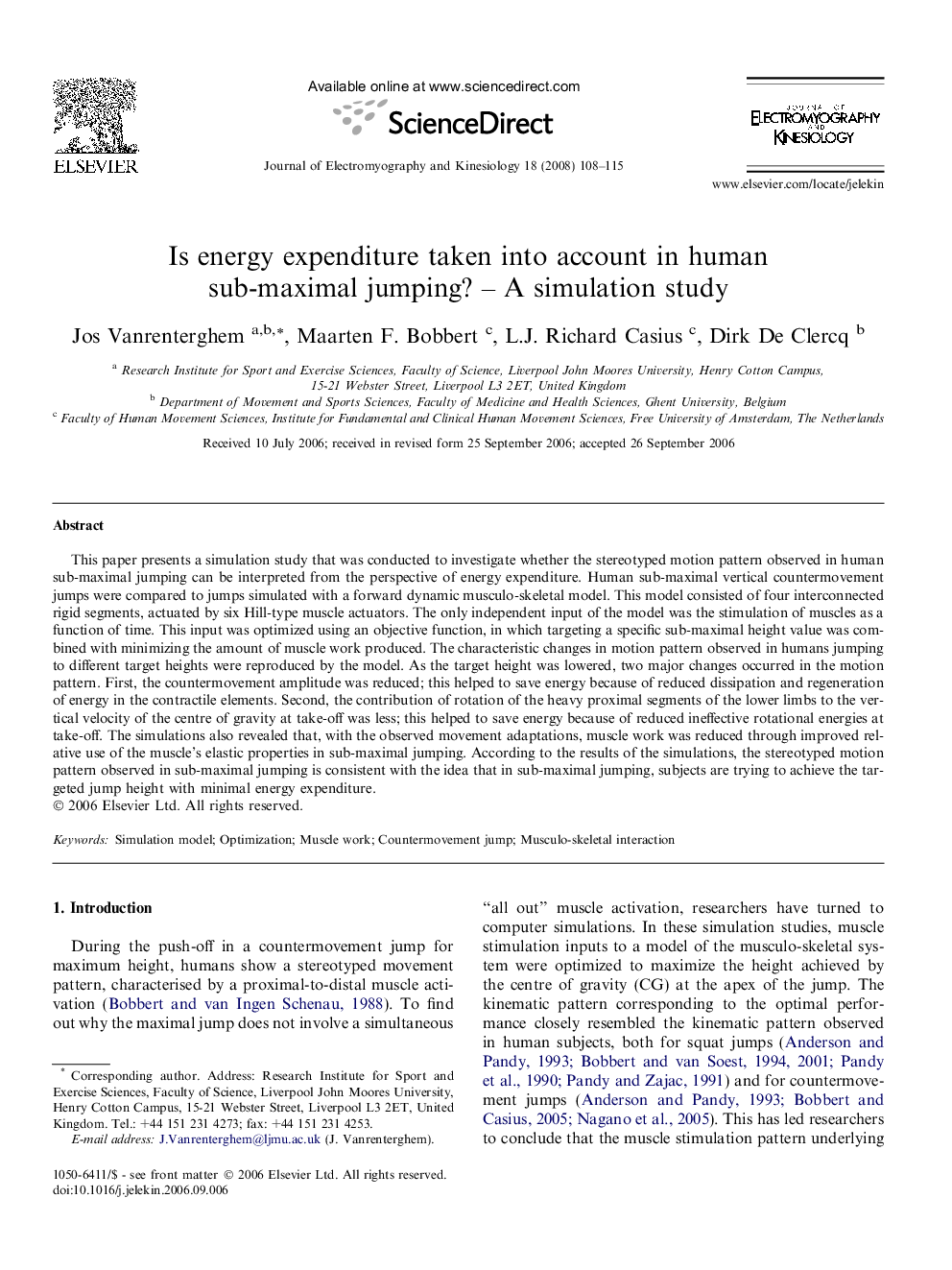| کد مقاله | کد نشریه | سال انتشار | مقاله انگلیسی | نسخه تمام متن |
|---|---|---|---|---|
| 4065375 | 1266249 | 2008 | 8 صفحه PDF | دانلود رایگان |

This paper presents a simulation study that was conducted to investigate whether the stereotyped motion pattern observed in human sub-maximal jumping can be interpreted from the perspective of energy expenditure. Human sub-maximal vertical countermovement jumps were compared to jumps simulated with a forward dynamic musculo-skeletal model. This model consisted of four interconnected rigid segments, actuated by six Hill-type muscle actuators. The only independent input of the model was the stimulation of muscles as a function of time. This input was optimized using an objective function, in which targeting a specific sub-maximal height value was combined with minimizing the amount of muscle work produced. The characteristic changes in motion pattern observed in humans jumping to different target heights were reproduced by the model. As the target height was lowered, two major changes occurred in the motion pattern. First, the countermovement amplitude was reduced; this helped to save energy because of reduced dissipation and regeneration of energy in the contractile elements. Second, the contribution of rotation of the heavy proximal segments of the lower limbs to the vertical velocity of the centre of gravity at take-off was less; this helped to save energy because of reduced ineffective rotational energies at take-off. The simulations also revealed that, with the observed movement adaptations, muscle work was reduced through improved relative use of the muscle’s elastic properties in sub-maximal jumping. According to the results of the simulations, the stereotyped motion pattern observed in sub-maximal jumping is consistent with the idea that in sub-maximal jumping, subjects are trying to achieve the targeted jump height with minimal energy expenditure.
Journal: Journal of Electromyography and Kinesiology - Volume 18, Issue 1, February 2008, Pages 108–115